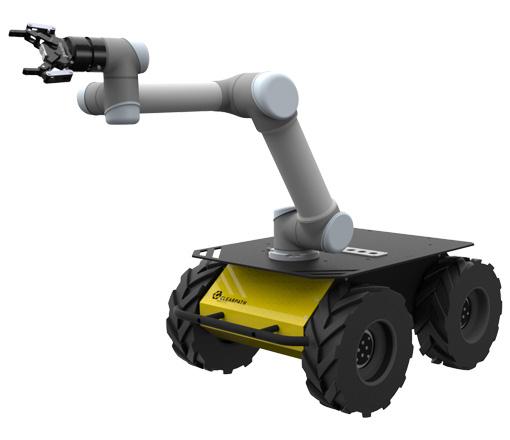UK Autonomous Mobile Manipulator Robots Market Trends, Forecast 2035

The United Kingdom's market for autonomous mobile manipulator robots is on a steep upward trajectory, powered by a convergence of compelling economic, technological, and societal factors. A detailed examination of the UK Autonomous Mobile Manipulator Robots Market Growth Rate reveals that the most significant driver is the persistent and worsening labor shortage affecting key sectors of the UK economy. Industries such as manufacturing, logistics, and agriculture are facing a critical deficit of skilled and unskilled labor, a situation exacerbated by demographic shifts and changes in labor market dynamics. This labor gap is particularly acute for physically demanding, repetitive, and often unergonomic tasks like order picking, machine loading, and material handling. The UK Autonomous Mobile Manipulator Robots Market size is projected to grow USD 4500 Million by 2035, exhibiting a CAGR of 10.5% during the forecast period 2025-2035. This robust growth is a direct response to this labor crisis, as AMMRs provide a reliable, scalable, and increasingly cost-effective solution to automate these essential tasks, ensuring business continuity and enabling companies to scale their operations without being constrained by the availability of human workers. The imperative to "do more with less" is the primary engine propelling market expansion.
Technological advancement is another powerful catalyst fueling the market's high growth rate. The performance and capabilities of AMMRs have improved dramatically in recent years, making them viable for a much wider range of applications. Advances in artificial intelligence (AI), particularly in computer vision and machine learning, have significantly enhanced the robots' ability to perceive and interact with their environment. Modern AMMRs can now identify a vast array of objects with high accuracy, even in cluttered and poorly lit conditions, and can perform delicate grasping and manipulation tasks that were previously impossible. Simultaneously, improvements in navigation technologies, such as advanced SLAM (Simultaneous Localization and Mapping) algorithms, allow these robots to operate safely and efficiently alongside human workers in dynamic, unstructured environments without the need for fixed infrastructure like magnetic strips or beacons. The increasing sophistication and reliability of the underlying software and hardware, combined with a gradual decrease in component costs, are making the business case for adoption more compelling than ever, thereby accelerating the market's growth.
From a strategic and governmental perspective, the market's growth is also being actively encouraged by a strong push towards increasing the UK's industrial productivity and global competitiveness. Government initiatives and funding programs aimed at promoting the adoption of advanced manufacturing technologies and robotics (as part of the broader Industry 4.0 agenda) are creating a favorable environment for investment. There is a growing recognition within both industry and government that automation is not just about cost reduction but is a strategic necessity for enhancing product quality, improving supply chain resilience, and enabling the onshoring or "reshoring" of manufacturing capabilities back to the UK. This strategic focus on building a more technologically advanced and self-sufficient industrial base provides a powerful, top-down impetus for the adoption of sophisticated automation solutions like AMMRs. This national strategic imperative, combined with the ground-level pressures of labor shortages and the pull of technological feasibility, creates a perfect storm for rapid and sustained market growth.
Top Trending Reports -
- Art
- Causes
- Crafts
- Dance
- Drinks
- Film
- Fitness
- Food
- Spiele
- Gardening
- Health
- Startseite
- Literature
- Music
- Networking
- Andere
- Party
- Religion
- Shopping
- Sports
- Theater
- Wellness
